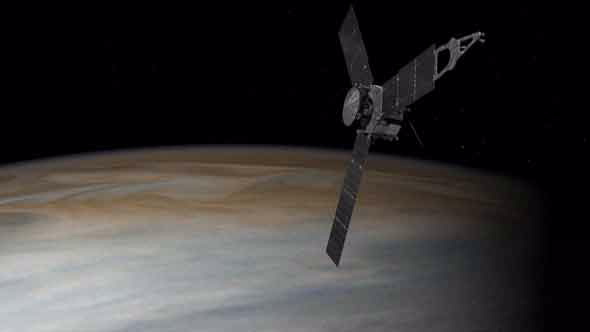
Yesterday afternoon, while many on Australia’s east coast were finishing their lunch, the spacecraft Juno entered the orbit of Jupiter more than 588 million kilometres away.
The extraordinary achievement, labelled by NASA’s Scott Bolton, principle investigator of the mission, as the hardest thing that NASA has ever done, will help scientists around the world unlock Jupiter’s mysteries.
Dr Helen Maynard-Casely is a planetary scientist at the Australian Nuclear Science and Technology Organisation (ANSTO).
Amongst other things, she specialises in recreating extreme conditions, temperatures and pressures found inside the planets and moons in our solar system.
She does this work in far more terrestrial settings - laboratories near the OPAL reactor at Sydney’s Lucas Heights, and the Australian Synchrotron in Melbourne.
“This is an exciting day for scientists around the world, who are about to get a whole lot more information about one of our biggest neighbours,” said Maynard-Casely.
“The gravity measurements from Juno will tell us about the spread of material in Jupiter’s interior – and whether it is condensed in a dense core, or more distributed over the planet.
“That information alone will provide people like me with a data point from which to base further experiments re-creating the interior of Jupiter and other gas giants.
“And the interior will have a bearing on the magnetic field of Jupiter – which is massive, if you could see it, it would appear on Earth to be bigger than the sun.
“That magnetic field is caused by something deep in the interior of Jupiter, and one thought is that it is hydrogen, which under the enormous pressure and temperatures of Jupiter has become a metal.”
Dr Maynard-Casely said this is in some respects pure research, but also research with very real potential applications right here on Earth.
“Who knows what the applications will be – including for those pursuing metallic hydrogen in the laboratory, which has been hypothesised but not found yet,” she said.
“Proving its existence could have massive implications for chemistry and for materials, with physicists in particular excited about the implications for superconductivity, potentially at room temperature.
“But perhaps more to the point or at least more immediately, Jupiter has deflected lots of comets and asteroids from hitting Earth over the years, and the least we can do is get to know him a little better.”
For Helen’s explainer in The Conversation: https://theconversation.com/juno-is-about-to-peer-under-the-clouds-of-jupiter-60500
Media contact, including for interviews: Phil McCall on 0438 619 987
Published: 06/07/2016


